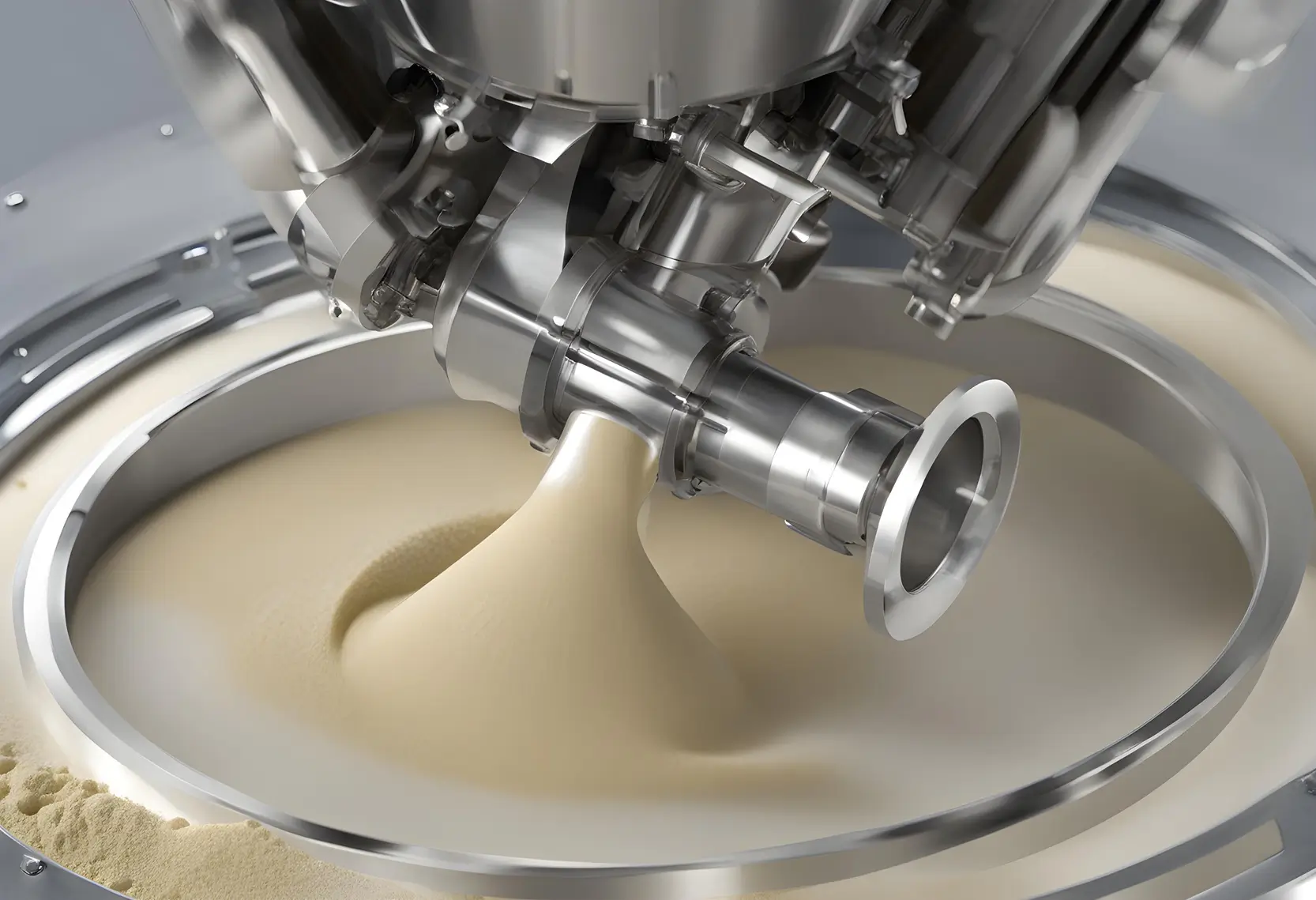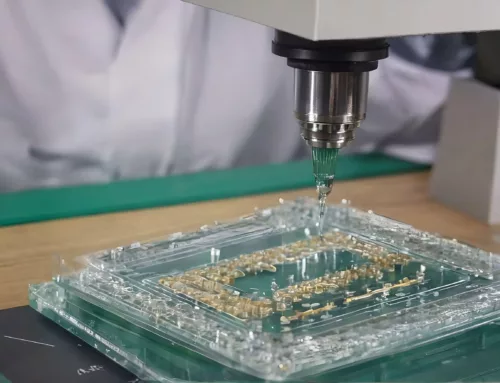
Viscosity in powder technology
Viscosity, a fundamental concept in physics and fluid dynamics, extends its influence across various facets of life, nature, and industry. In the context of liquids, viscosity refers to the resistance a substance presents to flow. This principle finds relevance in the bloodstream, where blood viscosity affects circulation efficiency. In nature, molten lava exemplifies viscosity as it determines the lava’s flowability during volcanic eruptions. Additionally, honey’s thick consistency showcases viscosity in everyday products.
Viscosity in Powder Technology: Industrial Applications
Importance of Viscosity in Powder Processing
Viscosity, a fundamental property influencing the flow behavior of materials, holds paramount importance, especially with powder processing within various industries. There, viscosity serves as an important parameter governing numerous processes and applications. Whether in pharmaceuticals, food production, or materials engineering, meticulous control over viscosity is imperative for handling and processing powdered substances effectively. Take pharmaceuticals, for example; viscosity assumes critical importance in facilitating the proper flow of liquids during formulation and filling processes. Beyond logistical considerations, viscosity profoundly affects drug delivery systems, directly influencing the therapeutic effectiveness and quality of the final pharmaceutical product. Understanding and controlling viscosity dynamics become imperative in the pursuit of optimal pharmaceutical outcomes.
The Relationship Between Viscosity and Powder Technology
The relationship between viscosity and powder technology underscores its pivotal role in improving efficiency and quality across a diverse range of industries. This synergy is a testament to the intricate interplay between fluid dynamics and powdered materials.
Beyond industrial applications, viscosity’s significance extends to biological and natural systems, shaping the flow behavior of substances. Blood viscosity, for instance, has implications for cardiovascular health, while fluid viscosity in plant structures influences nutrient transport. Even molten lava flow is intricately tied to its viscosity.
Shear Stresses in Powder Flow
Exploring Shear Stresses and Viscosity Dynamics
In the exploration of shear stresses and viscosity dynamics within the framework of powder flow behavior, a meticulous examination is imperative for advancing optimization strategies across diverse applications in powder technology.
This intricate scrutiny delves into scientific nuances, offering crucial insights that enhance manufacturing processes. The interplay between shear stress and viscosity, fundamental concepts in fluid dynamics, becomes a focal point for understanding the nuanced behavior of fluids and powders across various industries.
Exploring Shear Stresses and Viscosity Dynamics
Within the domain of powder technology, the interaction between shear stress and viscosity assumes paramount importance, exerting influence on the dynamics of fluid-powder systems. Considerations of shear stress and viscosity are particularly critical in industries such as pharmaceuticals, where precise mixing and dispersion of powders are essential for uniform formulations. Similarly, in construction materials, where the flow of powders like cement directly impacts workability, understanding and controlling shear stress and viscosity become essential for optimizing manufacturing processes.
Measuring Viscosity
Quantifying Viscosity in Powder-Related Industries
To quantify viscosity, various methods are employed, with capillary viscometers and rotational viscometers emerging as prominent choices. The selection of a method hinges on factors such as the inherent nature of the material, its sensitivity to temperature variations, and the desired level of measurement accuracy. Shear stress, acting as a force parallel to the flow direction within a substance, and viscosity, representing the resistance of a fluid to flow, are inherently interconnected. In the realm of powder-related industries, comprehending these fluid dynamics concepts is of paramount importance. Shear stress dictates the relative movement of fluid or suspended powder layers, while viscosity governs the overall resistance to deformation and flow.
Understanding Non-Newtonian Fluids
Importance of Non-Newtonian Fluid Behavior in Powder Technology
Understanding non-Newtonian fluid behavior becomes critical when exploring viscosity in powder technology. In scenarios involving powders suspended in these fluids, the interplay between shear stress and viscosity assumes greater complexity. Non-Newtonian fluids’ capacity to alter viscosity based on shear stress intensity adds an additional layer of intricacy to efficient powder processing in industrial applications. Therefore, a comprehensive exploration of viscosity in powder technology necessitates a thorough understanding of the distinctive characteristics and behavior of
non-Newtonian fluids, providing valuable insights for optimizing manufacturing processes across diverse powder-related industries.
Factors Influencing Viscosity Selection
Optimal viscosity selection for a specific application stands as a critical determinant for achieving precise outcomes, requiring a meticulous consideration of various factors. The nature of the material, encompassing parameters like particle size, shape, and concentration, intricately influences viscosity. A comprehensive understanding of these material characteristics serves as a foundational step in choosing an ideal viscosity for processing.
Dynamic Variables in Viscosity Selection
Temperature, pressure, and shear rate during processing constitute dynamic variables exerting profound impacts on viscosity. It becomes imperative to select a viscosity range that harmoniously aligns with the specified processing conditions to ensure consistent and controlled material flow. The interplay of these parameters within the fluidic system plays a pivotal role in governing viscosity behavior. The intended properties of the final product, spanning attributes like texture, appearance, and performance, intricately guide the viscosity selection process. The relationship between
viscosity and the desired product characteristics becomes a crucial aspect, necessitating a nuanced approach tailored to specific application requirements. Distinct applications may indeed demand varying viscosity levels to achieve optimal results, highlighting the need for a tailored and context-specific viscosity selection strategy.
Compatibility in Material Viscosity and Equipment
Compatibility between material viscosity and processing equipment is paramount for seamless operations. Optimal viscosity aligning with the capabilities of the processing equipment ensures not only efficiency but also mitigates potential operational challenges. The selection process involves a detailed evaluation of the rheological characteristics, ensuring a harmonious interaction between material viscosity and equipment dynamics.
Viscosity in Manufacturing
Viscosity in powder technology: Its role in Various Industries
Viscosity plays a crucial role in various industries, profoundly influencing material processing and overall performance. In pneumatic pipes, for example, viscosity plays a role, in influencing the efficiency and behavior of fluid flow. The interaction between shear stress and viscosity is important in understanding the dynamics of pneumatic systems. Shear stress, acting parallel to the flow direction within the pipes, directly affects the movement of the fluid. In scenarios involving non-Newtonian fluids, such as certain gas-
solid mixtures, viscosity varies under different flow conditions due to intricate particle interactions. This variability adds complexity to efficient pneumatic processing, demanding a comprehensive understanding of non-Newtonian fluid behavior. Conversely, in Newtonian fluids like air, where viscosity remains constant, the focus shifts to maintaining optimal flow for enhanced pneumatic performance. The careful selection and control of viscosity in pneumatic pipes, considering shear stress and fluid characteristics, are critical for achieving precise and efficient outcomes in various industrial applications.
Viscosity’s Impact in Specific Industries
The intricate nuances of viscosity are evident across diverse sectors, each underscoring its significance. For instance, in food production, meticulous control of viscosity is paramount for crafting sauces, dressings, and beverages, directly impacting consistency levels and enhancing the overall product experience. Transitioning to paints and coatings, viscosity becomes a key determinant ensuring uniform coverage and surface adherence, influencing both aesthetic appeal and functional integrity.
In the chemical industry, precision is paramount, making viscosity control essential for optimizing processes such as mixing, pumping, and fluid transportation. This control extends beyond logistical efficiency, influencing reaction kinetics and the overall efficacy of chemical manufacturing processes. The cosmetics industry, dedicated to delivering consistent product experiences, places viscosity at the forefront of formulation considerations. Whether in creams, lotions, or various beauty products,
viscosity governs texture and stability, directly affecting consumer satisfaction and the performance of these formulations. Moving to the manufacturing of construction materials like concrete and adhesives, viscosity emerges as a critical parameter shaping workability, pumpability, and setting time. The intricate dance of viscosity within these materials directly influences their practical application, highlighting its pivotal role in achieving desired properties in construction materials.
Viscosity and Flowability in Powder Technology
Within the diverse fabric of powder technology, the interaction between viscosity and flowability can be seen as a critical determinant of operational efficiency. Powder technology is in simple terms a dynamic system where each particle and process adheres to the principles of balance. The behavior of powders aligns with the principles of viscosity observed in well-regulated organizations. Low viscosity manifests as a dynamic interplay, facilitating unhindered movements and adaptability across diverse stages of production. Conversely, elevated viscosity, similar to tightly controlled powder structures, instigates resistance, following stringent protocols and hierarchies, underscoring the challenges encountered in finely tuned powder processes. In the realm of powder technology, this dynamic equilibrium between viscosity and flowability is foundational, dictating the fluidity and efficiency of powder-based endeavors.




